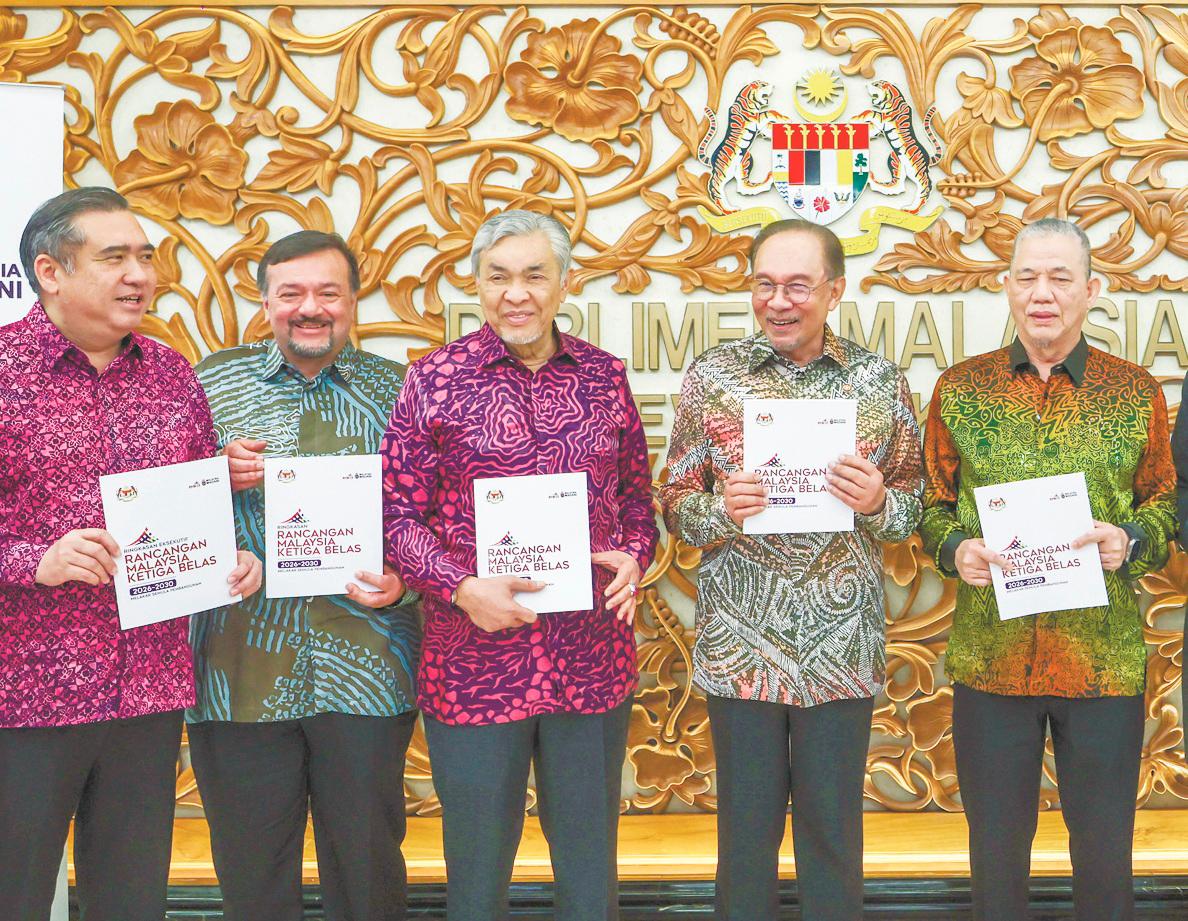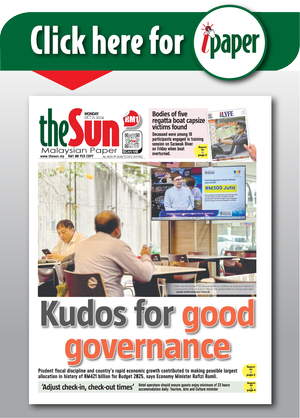KUALA LUMPUR: Malaysia is setting the stage for a high-value, inclusive and technologically advanced economy through the 13th Malaysia Plan (13MP).
Prime Minister Datuk Seri Anwar Ibrahim said Malaysia, with an ambitious growth forecast of 4.5% to 5.5% annually between 2026 and 2030, is laying down a multi-pronged blueprint to reposition the country as a regional economic powerhouse with a global voice.
“We must be brave to change course to ensure our economy remains strong so that our people do not bear the cost of inaction,” he said when presenting the 13MP in the Dewan Rakyat today.
He emphasised the urgency and determination embedded in 13MP, whose theme, Melakar Semula Pembangunan Demi Mengangkat Martabat Rakyat, underscores its people-centric and future-ready focus.
Economically, 13MP outlines targeted investments totalling RM611 billion, with RM430 billion allocated by the government itself. Over half of this, RM227 billion, will be allocated to the economic sector, while the remainder will be distributed among social development, security and governance.
Private sector participation through government-linked companies, government-linked investment companies and public-private partnerships is expected to contribute RM181 billion.
“We are not just aspiring for material achievements, but also united in diversity and grounded in a strong identity,“ Anwar said, signalling a development model that blends fiscal prudence, innovation and human-centred growth.
Among key economic indicators, he added, total approved investments between 2021 and 2024 increased to RM1.29 trillion, growing at an annual rate of 23.1%. In 2024 alone, Malaysia achieved a record-breaking RM384 billion in investments.
Inflation remained contained at 1.1% as of June 2025, while the fiscal deficit narrowed to 4.1% of gross domestic product (GDP) in 2024, down from 6.2% in 2020. The government aims to reduce this further to below 3% by 2030, while maintaining public debt at under 60% of GDP.
The 13MP aims to steer Malaysia away from dependence on raw commodity exports toward a diversified, value-added economy.
The semiconductor sector, where Malaysia is already the sixth-largest global exporter, is earmarked for a major leap through a flagship high value-high technology project, targeting RM1 trillion in electrical and electronic exports by 2030.
“We will not settle with being a production hub – we aim to lead in semiconductor design and innovation,” Anwar said.
Backing this is a US$250 million (RM1.06 billion) strategic collaboration with ARM Holdings, which will bolster Malaysia’s intellectual property capabilities and transition it up the global value chain.
Synergies with tech giants like Intel, Amazon Web Services and Infineon Technologies are set to deepen along the semiconductor ecosystem.
Further, the 13MP shows that technology and digitalisation are central to the new economic thrust.
Through the National AI Action Plan 2030 and digital infrastructure investments, Malaysia aims to become the leader in artificial intelligence in Southeast Asia. A nationwide rollout of 5G with 98% coverage, the creation of 5,000 digital entrepreneurs, and the digitalisation of 95% of federal services by 2030 underscore this ambition.
The green economy is also poised for expansion, supported by the National Energy Transition Roadmap. Malaysia is targeting to increase the share of renewable energy from 29% to 35% by 2030. These initiatives include battery energy storage, floating solar-hydro hybrids in Kenyir and a hydrogen hub in Sarawak.
Anwar said the government is considering nuclear energy as part of its clean energy mix.
“Malaysia must rise as an Asian economy known not just for growth, but for value creation and sustainability,” he said.
These efforts dovetail with carbon trading strategies, the National Carbon Market Policy and investments in waste-to-energy infrastructure.
The 13MP charts an aggressive push in halal exports too, aiming to hit RM80 billion and raise the sector’s GDP contribution to 11%. This will be driven by the newly established Halal Commission and the development of halal industrial parks in Malacca, Perak and Kelantan.
Complementing industry-focused growth is the expansion of Malaysia’s tourism sector. With 2026 declared as Visit Malaysia Year, the goal is for tourism to contribute 16% of GDP.
Strategic tourism investment zones in Johor, Malacca, Negeri Sembilan and Sarawak are planned to boost cultural, heritage and eco-tourism products.
The creative economy is also receiving a lift, with the digital creative industry generating RM6.3 billion in revenue and RM850 million in exports.
Flagship titles like Mechamato, Upin & Ipin, and Giga Bash showcase the potential of Malaysian talent in the global entertainment industry.
“The aim is not only to showcase our stories, but to make them commercially successful across borders,” said Anwar.
To meet future workforce demands, 13MP plans to create 1.2 million new jobs – 700,000 in manufacturing and 500,000 in the digital economy.
Human capital will be developed through restructured TVET (technical and vocational education and training) programmes focusing on high-growth, high-value sectors, supported by government-linked companies and training institutions.
For small and medium-sized enterprises, the government aims to achieve a 50% GDP contribution by 2030 through capacity building, digitalisation and access to strategic financing.
Measures include strategic investment funds, working capital support and capability enhancement schemes.
With Malaysia assuming the Asean chairmanship this year, cross-border infrastructure projects such as the Johor-Singapore Special Economic Zone, the Asean Power Grid, and the Johor-Singapore Rapid Transit System Link are aligned with broader regional integration.
“We are not retreating inward. Instead, Malaysia will lead in deepening regional connectivity and global engagement,” Anwar stated.
As the nation enters a critical five-year period, 13MP stands as a pivotal plan, one that not only targets high-income status but also aspires to build a resilient, inclusive and innovation-driven Malaysia.









